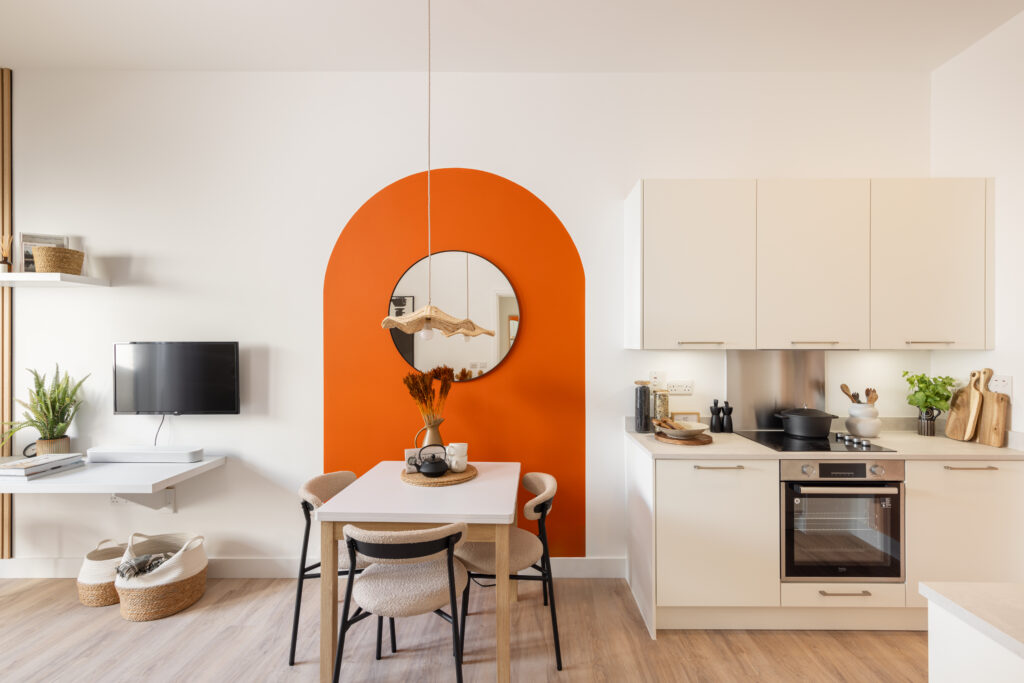The UK government’s new Commonhold White Paper could mark a major shift in homeownership, aiming to replace the current leasehold system with the commonhold model. But what does this actually mean for flat owners and buyers? In this guide, we break down the key differences between leasehold and commonhold, what the proposed changes involve, and how they could impact future homeowners – including those buying Pocket homes.

What is a leasehold?
A leasehold is a common form of home ownership in the UK, where you buy the right to occupy a property for a set period of time. It’s typically used for flats or homes in shared buildings, where the land itself is owned by a freeholder (more on them in a bit).
Lease lengths vary, and properties with fewer than 80 years left on the lease are unlikely to qualify for a mortgage. To sell or remortgage, the lease would likely need to be extended. Thanks to the Leasehold and Freehold Reform Act 2024, new lease extensions now typically last 990 years.
Leasehold properties can be bought and sold on the open market, just like freehold homes. However, with all leasehold properties, there is an underlying freehold, owned by the freeholder – the person or company that owns the land the building sits on.
For older leasehold properties, leaseholders often pay ground rent to the freeholder – a fee that usually increases every 5-10 years. However, since the Leasehold Reform (Ground Rent) Act 2022, new leasehold homes now come with a peppercorn ground rent – a nominal fee, often just £1.
Leaseholders also pay a service charge towards the upkeep and maintenance of the building and communal areas. This covers things like:
- Buildings insurance
- Cleaning of shared spaces
- Communal electricity and heating
- Lift and security systems
- General maintenance of communal areas
Part of the service charge often goes into a reserve fund to cover future major works on the building.
(Just to clarify: this refers to long leasehold properties, which is different from a short-term tenancy agreement that most renters sign.)
What is a commonhold?
With commonhold, owners own the freehold of their individual unit.
As a commonhold owner, you would jointly own and be responsible for the communal areas, along with the other unit owners, through a commonhold association. This means contributing to the maintenance and upkeep costs, similar to how leaseholders pay a service charge. The commonhold association determines how much these costs will be, in line with legal requirements for residential buildings.
Some commonhold associations may choose to hire an external building manager, with the costs shared by the unit owners.
One key difference? No ground rent – commonhold owners own the freehold of their unit, so there’s no need to pay it. This is also true for newer leasehold homes, thanks to the 2022 ground rent reforms.
What happens now?
As it’s still early days, the government hasn’t yet outlined the full requirements that developers and landlords will need to follow once the legislation comes into force. So, we don’t know exactly how this will affect new-build homes going forward.
Once the law is in place, developers will need to comply with the new rules. However, given the scale of these changes, it’s likely to take several years before they are fully implemented.
Are Pocket homes leasehold?

Yes – all Pocket homes for sale are currently leasehold properties. Lease lengths vary across our developments, ranging from 125 years to 999 years.
Each Pocket development has a Residents Management Company (RMC), made up of all the owners. Once all residents have moved in, the RMC takes over responsibility for managing the communal areas – similar to how a commonhold association would operate.
The RMC also has a say in what is included in the service charge and works with external building managers to oversee the running of the common areas.
There are also some benefits to the leasehold system. For example, managing agents can enforce regulations that benefit all residents – such as preventing noise disturbances, which helps keep the peace for everyone.